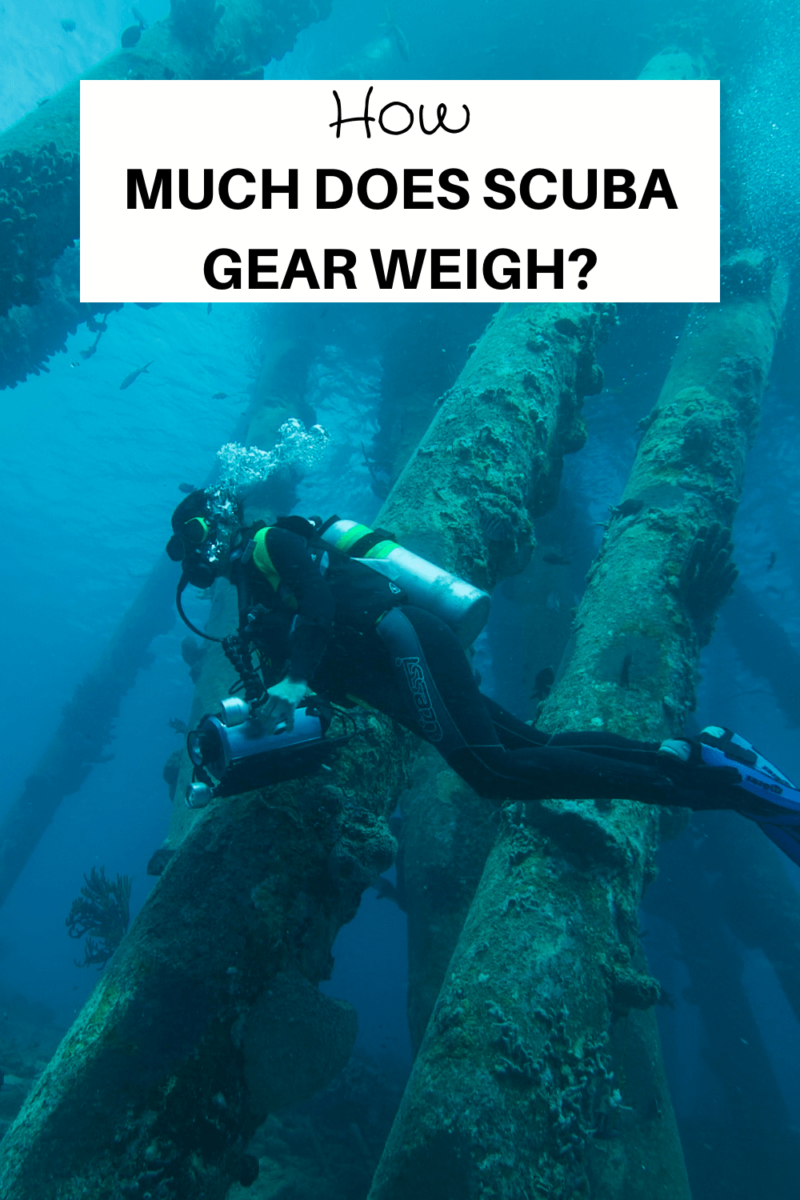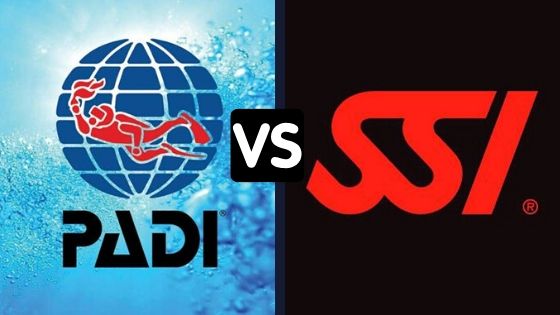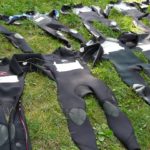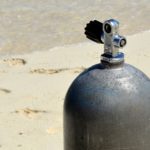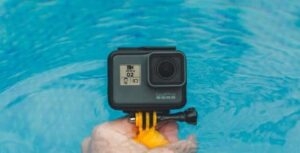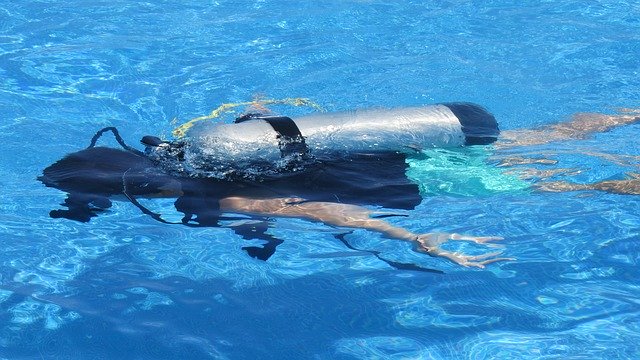
One of the concerns newbie scuba divers’ have and most often express worries is about the diving equipment. When they see scuba divers carrying a lot of gear there start to wonder about the weight of all that scuba gear. So how much does scuba gear weigh?
The total weight of the scuba gear comes in around 20 kg to 24 kg. The heaviest part of the scuba gear is the scuba tank. This accounts for the bulk of the weight of the scuba gear. The weight of a standard aluminum tank is about 16 kg. The remaining weight of the scuba gear such as the BCD, regulators, and wetsuit comes in at around 4 kg to 8 kg.
In today’s post, we will go through in more detail how much scuba gear weighs, so let’s get started!
Read more on common questions asked by divers
How Much Does Scuba Gear Weigh?
The heaviest part of the scuba gear is the scuba tank. This accounts for the bulk of the weight of the scuba gear. The weight of a standard aluminum tank is about 16 kg. Whereas a standard steel tank is about 13 kg. The remaining weight of the scuba gear such as the BCD, regulators, and wetsuit comes in at around 4 kg to 8 kg.
The reason why there is a variance between the 4 kg to 8 kg is that the scuba diver could be using a thicker wetsuit or drysuit. Along with a hood, gloves, or knives commonly used in colder water.
If you are unsure about the weight of the scuba gear, you can adopt various best approaches and techniques to reduce the time on the surface with full gear.
Also, there are weights added to your weight belt or added to your BCD to help you to submerge. The weight depends on the individual but can range from 2 kg to 6 kg. This is something to be aware of.
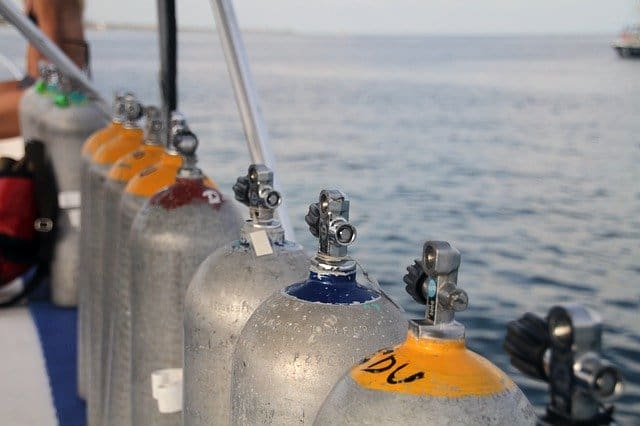
Why Do Scuba Tanks Weigh So Much?
The one key reason that scuba tanks are heavy is that it is the factor that tanks are built to carry compressed gas. And are subject to repeated stretching and release of that pressure during the lifespan of the scuba tank.
Along with that, you can add the design and construction technique where the tank is stretched during production but not while hot. Making some regions of the tank, such as the neck and thread portion, weaker than the other smooth portions of the tank.
Additionally, when a tank reaches five years of age, it must be hydro (pressure tested) and recertified to its design power.
What If Your Scuba Gear Is Too Heavy Underwater?
Getting used to the weight of the scuba gear and getting the weights right for your weight belt takes time. Also, it takes time to get your buoyancy right and this comes with practice.
As we are scuba diving, the pressure reduces the buoyancy of the equipment we are wearing. For example, the tiny bubbles trapped inside the material of our exposed suits will compress, and the weights we are now carrying will overcome the equipment’s buoyant support.
To compensate, we add modest amounts of air to the BCD and balance the system out to make it ‘neutrally buoyant.’ As we go deeper, the air in our BCD compresses and offers less support, requiring the addition of more air to the jacket.
If we climb, we must expel part of the expanding air again, or we would become too positively buoyant, making it more challenging to stay underwater.
This is the point at which being overweight becomes harmful. Where a situation where a diver carries too much weight, they will need to inflate their jacket excessively.
If they raise more than a few meters, the expanding air quickly overcomes the lead’s negative effect.
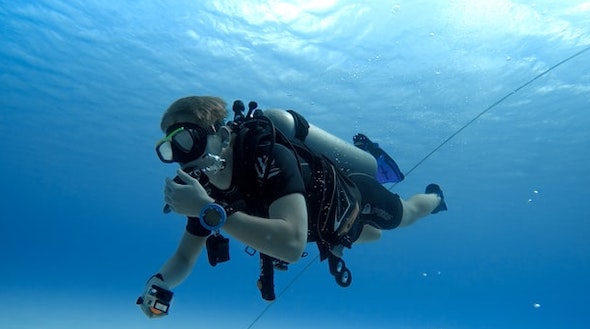
If the situation rapidly worsens. Divers frequently attempt to swim back down whilst depressing the low-pressure hose’s deflator button.
As they are pointed downward, this has no impact, while air moves only upward. The expanding air gathers at the jacket base, which is now pointed upward, resulting in the traditional feet-first, uncontrolled buoyant rise.
As learned in the open diving cert, divers must add weight to their equipment (most frequently in the form of tiny lead blocks) that compensate for the extra buoyancy caused by the exposure suit and buoyancy control device we are wearing.
If your diving gear is too heavy, this frequently indicates that you have placed excessive weight on your weight belt. While you can usually overcome this with proper buoyancy controls, there is a limit at which it becomes dangerous, not what you may believe.
Wrapping Up
Finally, the total weight of the scuba gear comes to around 20 kg to 24 kg. The heaviest part of the scuba gear is the scuba tank. This accounts for the bulk of the weight of the scuba gear. The weight of a standard aluminum tank is about 16 kg. With the remaining weight of the scuba gear such as the BCD, regulators, and wetsuit comes in at around 4 kg to 8kg.
And that’s it for now! I’d love to know if this guide on how much does scuba gear weigh has helped you. Let me know if you have any questions and let me know if there is more to add.
Did you enjoy this post? Then don’t forget to pin it!
